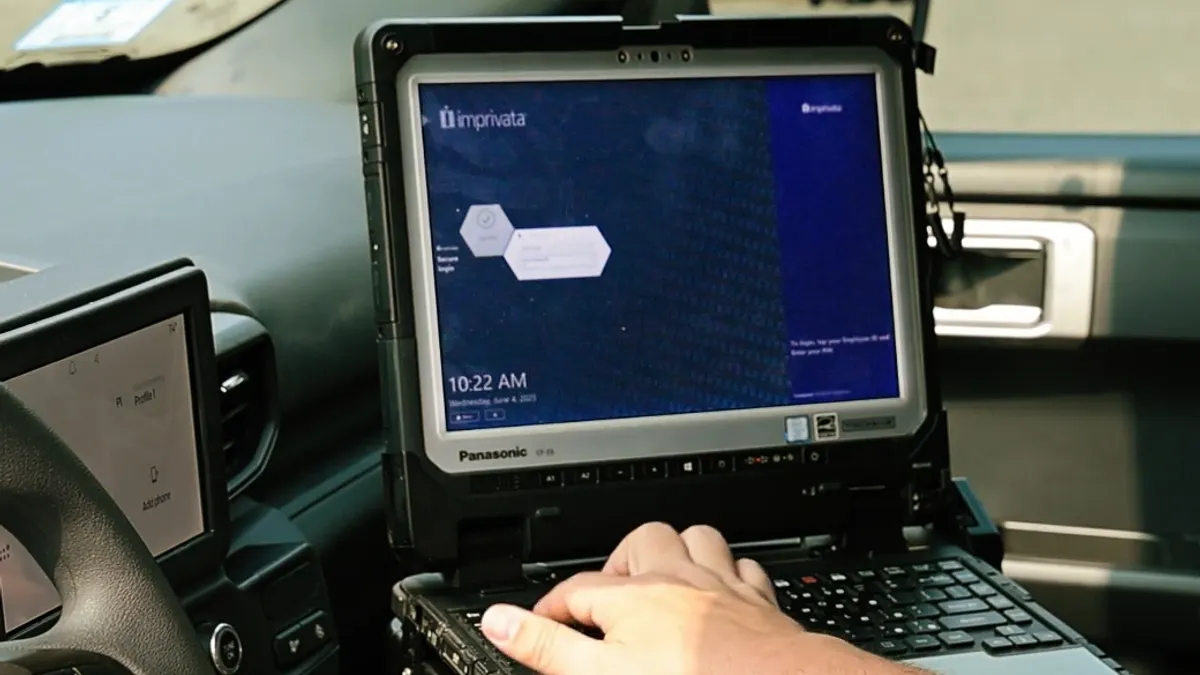The Criminal Justice Information Services (CJIS) Security Policy compliance has always been about protecting access to criminal justice information. Today, compliance is no longer just a requirement. It is a catalyst for modernization.
The CJIS Security Policy now reaches across nearly every layer of law enforcement technology. From shared workstations to cloud-based applications, agencies must prove that every access is secure, authenticated, and accountable. These expectations are not new, but the urgency behind them is.
Why now: a new era of compliance
Recent updates to CJIS reflect how quickly technology and risk have evolved. Multifactor authentication is now required for all access to criminal justice systems. Agencies are also expected to maintain continuous oversight of users, third-party vendors, and connected systems throughout their lifecycle.
These updates mark an important shift. Compliance is no longer a box to check. It is a test of modernization.
Agencies that rely on legacy systems or manual controls find it increasingly difficult to meet these mandates without slowing down operations. As more systems move to hybrid or cloud environments, identity assurance and access consistency must keep pace.
The modernization gap
Many public safety organizations face the same challenge. The systems they depend on were not designed with modern authentication in mind. Patrol car laptops, dispatch consoles, and records management systems often predate multifactor authentication or centralized identity management.
Replacing these systems outright is not always possible. Leaving them unsecured is not an option. The result is a modernization gap that can put both compliance and efficiency at risk.
Bridging that gap requires a modern access framework that layers identity and authentication controls across both old and new technologies without creating friction for users.
Modernization as a compliance strategy
Modernizing for CJIS compliance does not mean replacing everything at once. It means building a cohesive access environment that can evolve with the policy and the organization. That strategy includes:
- Unified identity management. A centralized identity system ensures that every user, internal or external, can be authenticated consistently, no matter which system they are accessing.
- Adaptive authentication. Agencies need multifactor authentication options that work across devices, applications, and network conditions, including shared and offline environments.
- Lifecycle-based access control. User provisioning, privilege adjustments, and deactivation must be automated to keep pace with personnel changes and contractor timelines.
- Integrated audit and reporting. Real-time visibility into access patterns reduces the administrative burden of preparing for CJIS audits and provides ongoing evidence of compliance.
Each of these elements makes compliance repeatable and sustainable. They also reduce manual oversight and help future-proof security against policy changes.
Building resilience through readiness
Agencies that modernize their access systems not only simplify compliance, they strengthen resilience. When authentication and authorization processes are modernized, they become easier to manage, harder to bypass, and better aligned with operational needs.
This readiness also prepares agencies for future mandates. As new versions of CJIS expand requirements for supply chain risk management and continuous monitoring, modern identity and access frameworks will already meet those standards by design.
Moving from compliance to confidence
CJIS compliance should not slow down mission-critical work. With modern, adaptive systems, agencies can meet the most stringent requirements while improving user experience and reducing administrative workload.
The right modernization approach transforms compliance from a recurring challenge into an operational advantage. It simplifies access, reduces risk, and ensures that security keeps pace with how law enforcement works today.
Staying compliant should not be about doing more. It should be about doing it smarter.
Want to learn more about the latest updates to CJIS mandates? Download our free white paper, CJIS 6.0 compliance made practical.










